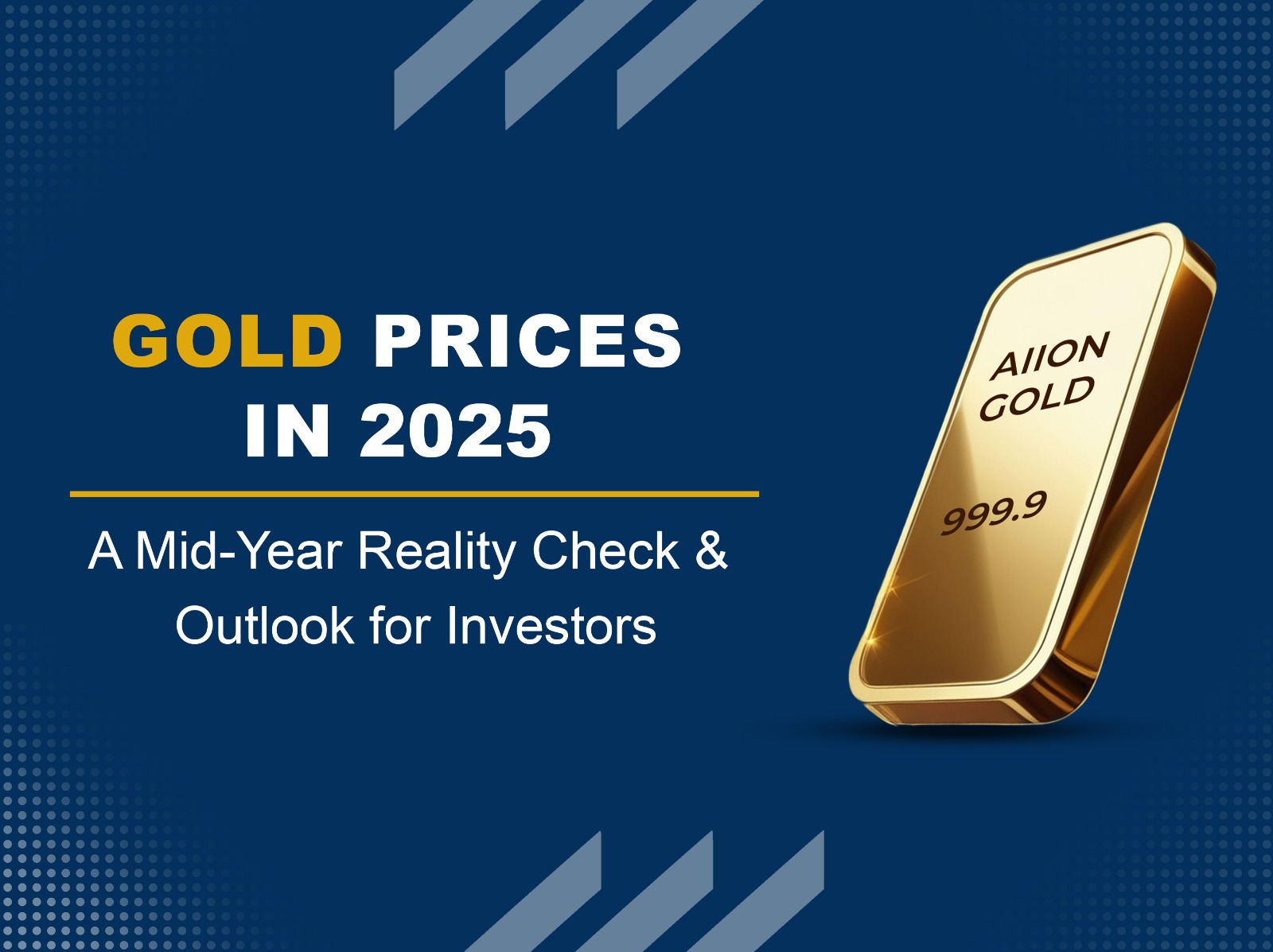Gold Prices in 2025 A Mid Year Reality Check

As we move into the second half of 2025, gold remains one of the most closely scrutinized assets in the global financial landscape. After a dramatic rally in the first half of the year, spot gold prices have reached historic highs fueled by inflation concerns, global instability, and a significant shift in central bank policy.
But the pressing question on every investor’s mind is this: Have gold prices already peaked, or is this rally just beginning?
Gold’s bullish momentum in 2025 has been largely powered by the U.S. Federal Reserve’s pivot toward a more dovish monetary stance. After years of tightening, the Fed signaled rate cuts in Q2, marking a key turning point.
Key Highlights:
These shifts have created a classic setup for gold: negative real yields, dovish policy, and a weakening dollar — a trifecta for price appreciation.
Uncertainty remains a key driver of gold demand, and 2025 is delivering plenty of it. From escalating tensions in Eastern Europe and trade disputes between the U.S. and China, to conflicts in the Middle East, investors continue to seek safety.
Safe-Haven Catalysts:
In an environment fraught with geopolitical and economic volatility, gold remains a trusted safe-haven.
While demand has surged, supply is lagging behind. Environmental regulations, political pressures, and aging mine infrastructure are limiting new production.
Current Challenges:
These constraints are creating an imbalance that could support higher prices into the second half of the year.
Market analysts expect gold to remain elevated, with prices likely hovering between $2,350 and $2,600 per ounce. If macro uncertainty worsens, prices could break above $2,700, setting a new all-time high.
|
Quarter |
Min Price ($/oz) |
Max Price ($/oz) |
Analyst Consensus |
|
Q3 2025 |
2,350 |
2,600 |
Bullish |
|
Q4 2025 |
2,400 |
2,700 |
Moderately Bullish |
With prices high and risks elevated, a balanced approach to gold investing is essential. Here are four key strategies:
Physical gold — in the form of coins, bars, or jewelry — remains the bedrock of any precious metals strategy.
Tips:
Gold ETFs such as SPDR Gold Shares (GLD) or iShares Gold Trust (IAU) offer easy market access without the hassle of storage.
Benefits:
Actively managed mutual funds can also provide leveraged exposure to gold mining companies, adding growth potential.
For those seeking higher returns, gold mining stocks can amplify gains — albeit with more volatility.
Top Picks:
Suggested ETF: VanEck Gold Miners ETF (GDX)
Note: Mining stocks are sensitive to broader market sentiment and operational risks, so tread carefully.
Blockchain-based gold assets such as Paxos Gold (PAXG) and Tether Gold (XAUT) offer a new spin on gold investing — blending traditional value with modern technology.
Advantages:
Digital gold is gaining traction, particularly among tech-savvy and younger investors looking for flexible options.
No. While prices are high, macro conditions still favor gold — especially if rates continue to fall and uncertainty increases.
Yes. As part of broader de-dollarization trends, central banks are likely to continue increasing their gold reserves.